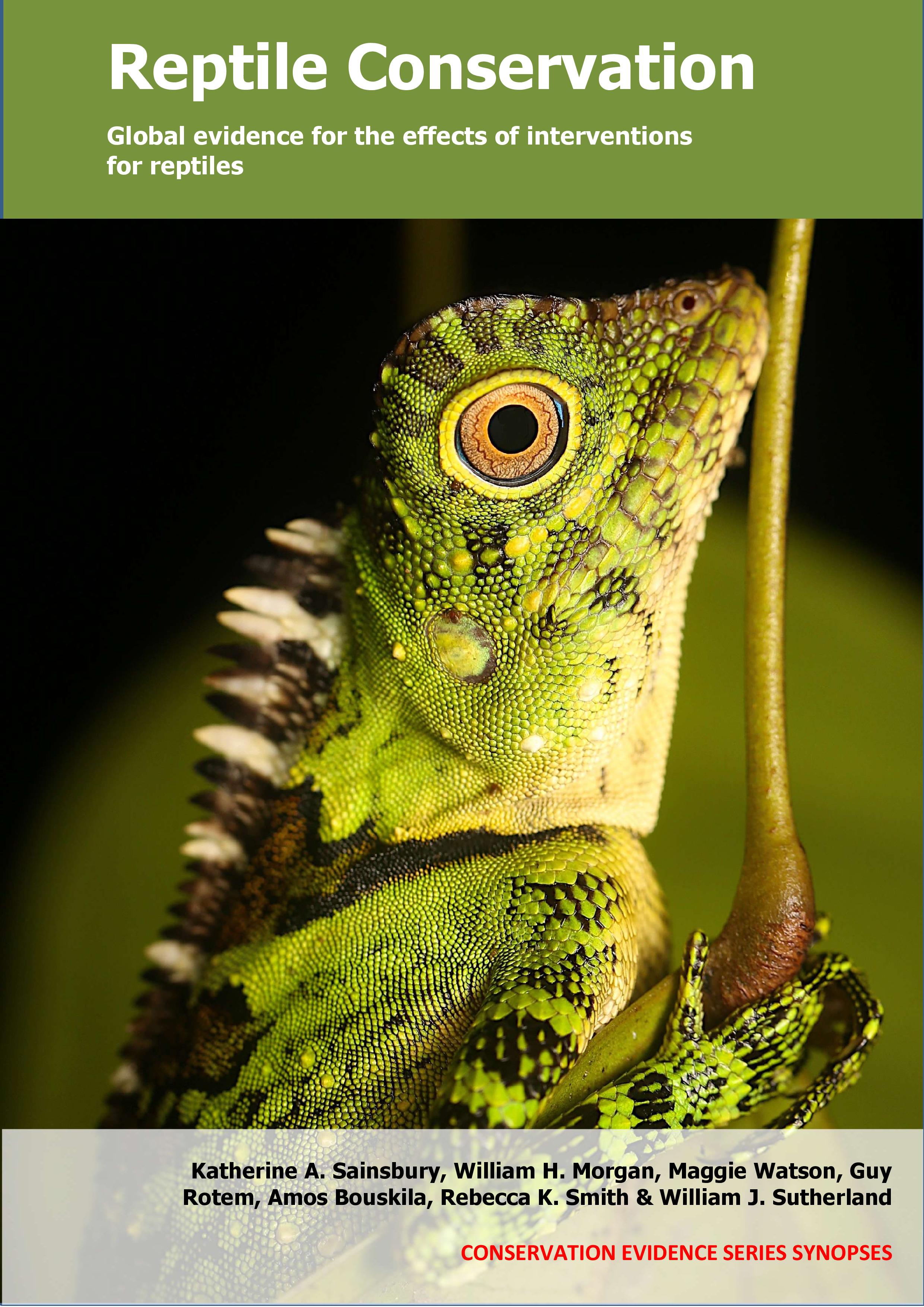Manage vegetation using livestock grazing
-
Overall effectiveness category Awaiting assessment
-
Number of studies: 2
View assessment score
Hide assessment score
How is the evidence assessed?
-
Effectiveness
not assessed -
Certainty
not assessed -
Harms
not assessed
Study locations
Supporting evidence from individual studies
A site comparison study in 2016 in an area of heathland in Nouvelle-Aquitaine, France (Pernat et al. 2017) found that one of six reptile species was more abundant in a site grazed by sheep than in sites that were burned 5–12 years previously, whereas the other five species were similarly abundant across all sites. More western green lizards Lacerta bilineata were found in the grazed area (1.5 lizards/site) than in any of the burned areas (0.1 lizards/site for all burned sites), whereas no difference was found between grazed or burned areas in the number of wall lizards Podarcis muralis (0–4 lizards/site) or the number of four snakes species (green whip snake Hierophis viridiflavus, viperine snake Natrix maura, grass snake Natrix natrix and European asp Vipera aspis; data not presented). An area of heathland (135 ha) was managed by annual sheep grazing or prescribed burning. One grazed site and three burned sites (all sites 8–10 ha) were selected (one each burned 5, 10 or 12 years ago). In 2016, a total of 96 cover boards (corrugated roofing tiles) were split between the four areas (24 boards/area), and 10 surveys were conducted in April–June. Reptiles found on or under cover boards were counted.
Study and other actions testedA before-and-after study in 2009–2016 in wet meadow and marsh in New York State, USA (Travis et al. 2018) found that after grazing cattle to restore bog turtle Glyptemys muhlenbergii habitat along with using artificial nest covers, more eggs were laid in more nests, hatching rates increased and more juveniles were observed. Results were not statistically tested. More bog turtle eggs were laid after grazing commenced and artificial nest covers were used (2012–2016: 15–47 eggs in 3–12 nests/year) compared to before (2009–2010: 7–8 eggs in 2–3 nests/year). After grazing started, all nests were found in areas that had been grazed in the current or previous growing season. Overall hatching success was 52% (58 of 112 eggs hatched) compared to 27% when nests were not protected and there was no grazing (4 of 15 eggs hatched). More juveniles were observed at the end of the grazing program (2016: 6 juveniles/year) compared to at the start (2012: 1 juvenile/year). In 2012–2014 and 2016, one or both of two adjacent fenced paddocks (3.6 ha total area, 1.6 ha of bog turtle habitat) were grazed by 0.6–1.4 cattle/ha for 5–21 weeks in April-October (see original paper for details) and bog turtle nests were protected by mesh-cloth artificial nest covers (12 x 12 x 12 cm). In 2009–2010, there was no grazing and bog turtle nests were not protected. Nests were located by surveying on foot in 2009–2016 (2014 data were excluded). Turtles were monitored by radio tracking and on foot observations in 2012–2016.
Study and other actions tested
Where has this evidence come from?
List of journals searched by synopsis
All the journals searched for all synopses
This Action forms part of the Action Synopsis:
Reptile Conservation
Reptile Conservation - Published 2021
Reptile synopsis





)_2023.JPG)














